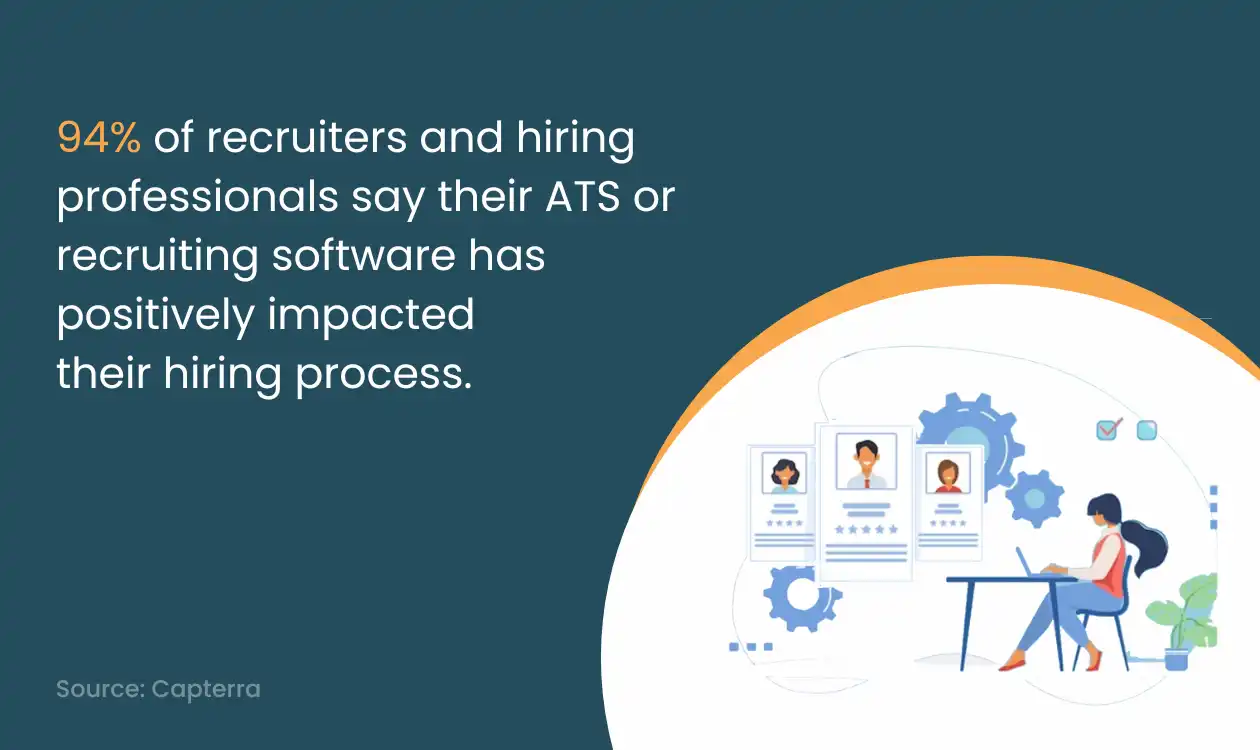Hiring is tough, right?
You sift through tons of resumes and hold interviews after interviews, but you’re still left wondering if you've picked the best fit for your team.
It’s exhausting, time-consuming, and sometimes feels more like rolling the dice than making a strategic decision.
But what if I told you there are proven ways to improve your hiring process—strategies that can help you attract top talent and avoid costly mis-hires in 2025?
Sounds good, doesn’t it?
Just like you wouldn’t use a flip phone in today’s smartphone era, you shouldn’t be using hiring practices from 10 years ago. The game has changed.
From leveraging data-driven tools to rethinking how you assess candidates' potential, there are concrete steps you can take to level up your hiring process in 2025.
In this guide, You’ll get to learn about 9 proven ways to improve your hiring process so you can stop wasting time, avoid bad hires, and start building the Resilient team your company deserves.
Let’s get into it!
9 Smart Approaches to Improve the Hiring Process
1. Build a talent pipeline
Basically, talent pipelines are a database of potential applicants who can fill future roles. By sourcing potential candidates before hiring them, recruiters have ample time to engage with them and get to know them more, which eventually reduces the time to hire when a position is open in the organisation.
Here are some of the steps to build a talent pipeline effectively:
-
Figure out the roles which roles require a pipeline (roles that are hard-to-fill or open positions with high turnover).
-
Look to past applicants, the company’s alumni network and interns to build your pipeline.
-
Implement sourcing techniques such as Boolean search and recruiting & HR conferences & events to find passive talent.
-
Increase candidate engagement, reach out to them and stay in touch until you have an open position for them.
2. Promote Your Employer's Branding
First and foremost, you must promote your employer's brand is one of the major concerns of the candidate is not knowing what the company is like in which they are applying to work. Hence, employer branding becomes a priority for recruiters and HRs worldwide.
In this day and age of the internet, the very first thing a candidate does when applying for a job is to check out the company's website and social media pages to learn about the company's culture and work environment. So, the employer must make sure that they have a strong online presence and should put some time and effort into promoting their brand online as well as offline.
They can post photos and videos of the company on social media, Share blogs and good content on their website and also attend events to spread the word about the brand and expand its network. Recruiters must implement recruitment marketing techniques efficiently to strengthen their employer branding efforts.
3. Redefine Your Job Requirements
There is a lot of competition when it comes to hiring good employees in your company, and one of the best ways to attract good applicants is by redefining your job requirements.
Recruiters must make their job postings appealing so that the candidate reads the entire job description and is compelled to apply for the job position. Along with this, the recruiter must keep in mind that the candidate does not want to read long paragraphs about the job position in your company, so they must keep the job posting to the point while highlighting the benefits of the job position and your company.
4. Speed up your screening
In order to improve the hiring process, recruiters must start by speeding up all the hiring tasks that are time-consuming and, at the same time, maintain quality. Usually, in the hiring workflow, the most time-consuming stage is the screening process.
In this stage, recruiters need to do many tasks such as reviewing thousands of resumes, conducting screen assessment tests, shortlisting candidates, and scheduling and taking interviews with the applicants.
Hence, the recruitment team has to figure out ways to make the screening process faster and improve the overall hiring workflow. The following are some of the key techniques to create a quick and efficient screening process.
-
Implement structured interviews to ensure consistent and efficient screening criteria.
-
Automate manual tasks such as reviewing resumes, conducting skill assessment tests, and scheduling interviews.
-
Utilise pre-screen tests and questionnaires to filter out the applications that are unqualified.
-
Use video interviews rather than conducting in-person interviews
-
Create one-way video interviews, which recruiters can review at their convenience time and candidates can respond at their convenience time.
The above-mentioned techniques will surely help recruiters to reduce the time in the screening process eventually improve the hiring process and provide a better candidate experience effectively.
5. Use an Applicant Tracking System
To improve the hiring process, recruiters must choose the best recruitment software. To do that, one of the most important talent acquisition tools that Recruiters can use during the recruitment process is an Application Tracking System (ATS).
An Application Tracking System makes the hiring process organised and easier and the communication between the candidate and the recruiter most sorted as it supports automated communication. The ATS is also helpful when it comes to finding the best talent from all the applications for the job position, as it refines the data and provides results.
6. Seek Help from Your Current Employees
To speed up your recruiting process, you can also reach out to your current employees and ask them to promote vacant job positions via word of mouth or through their social media profiles.
You can also set up a referral program that will motivate your current employees to participate in the recruitment process.
7. Improve your Interviews for the hiring process
When you are conducting an interview, it is not only you who is making up your mind about the candidate, but also you are putting your company to the applicant. So whether the interview is conducted through a video call or face-to-face in a conference room, you must be very organised with your interview and should not rush through it.
The recruiter must train the HR staff to make the candidates feel welcomed and comfortable and ask the questions that bring out the candidate's personality. Once the interview is conducted, take time before coming to a decision about a candidate before making a judgment.
8. Enhance the candidate experience
Each interaction with candidates during the hiring process is important as it shapes the image of the company. Indeed positive candidate experience can increase the employer's brand, and the company get more candidates in the talent pipeline when a new position opens up. Hence, to improve candidate experience following are some key actionable tips that recruiters and HRs must implement:
-
Be transparent throughout your hiring process.
-
Streamline and shorten your application process.
-
Keep candidates in the loop.
-
Be informative & genuine.
-
Enhance your career page.
-
Give and ask for feedback.
-
Be user-friendly.
9. Be Flexible
Candidates, while looking for a job, consider many factors, and one of them is flexibility. Providing flexible work options like working from home, and flexible working hours, among others, can make the opposition more appealing to the applicant, and they might end up choosing your company over your competitors.
The hiring process is an important and time-consuming process that can be made easier using the latest technology. These methods will help you to improve your recruitment process and increase the hiring rate eventually.
Final Thought on Ways to Improve the Hiring Process
Improving your hiring process is an ongoing task that requires constant attention and evaluation.
By implementing the techniques discussed in this blog, you can create a more effective and efficient hiring process that attracts and selects the best talent for your organisation.
A crucial aspect of refining your hiring process is gathering feedback from both successful and unsuccessful candidates. Their insights can help you identify strengths and areas for improvement.
After all, hiring is a two-way street—while you are assessing candidates, they are also evaluating your company.
Creating a positive and transparent experience can make a significant difference in attracting the best talent.
Lastly, be patient and thorough. Rushing the hiring process can lead to poor decisions that cost time and money in the long run.
Investing time upfront to find the best fit will pay off with a productive, engaged employee who contributes positively to your team and company culture.
So, go ahead, implement these techniques, and watch your hiring process become more efficient and effective.
FAQs for Streamlining Your Recruitment Process
1. How do you measure the success of your talent pipeline?
Measuring the success of your talent pipeline can feel a bit overwhelming, but it doesn't have to be. Start by tracking key metrics like time-to-hire, quality of candidates, and the retention rates of those hired through the pipeline. If you're consistently bringing in qualified candidates who stay and thrive in their roles, that’s a good sign your pipeline is working effectively.
2. What steps can you take to align your employer branding with evolving market trends?
Seen how quickly market trends can shift, and staying ahead is key. To align your employer branding with these changes, start by continuously monitoring industry trends and adapting your messaging to reflect what today’s top talent values, like flexibility and diversity. Also, encourage employee advocacy—your current team’s voices can be the strongest tool to showcase your company culture authentically.
3. What are the best practices for optimising candidate feedback during and after the interview?
The best way to optimise your candidate feedback is to make it timely, constructive, and specific. Provide feedback soon after the interview while it’s still fresh in both your and the candidate's minds. Be clear about what they did well and where they could improve, always keeping the tone respectful and encouraging. This approach not only helps candidates grow but also leaves a positive impression of your organisation, even if they aren’t selected.
4. How do you integrate AI into your hiring process without compromising the human touch?
Integrating AI into your hiring process can streamline tasks like screening and sorting resumes, but it's essential to balance technology with personal engagement. Use AI for efficiency, such as narrowing down candidate pools, while ensuring human interaction during interviews and feedback stages. Remember, AI can handle the data, but the human touch is what builds relationships and fosters trust with potential hires.







_(1)4.jpg)




.webp)

